
This article originally appeared in the May/June 2015 edition of the Museum magazine.
Museums today are leveraging eating, drinking and tasting in new ways for visitors. Institutions striving to deliver multisensory experiences can find no better vehicle than food. Following are examples of institutions that are using food to complement the museum experience while providing meaningful connections and messages to visitors. They are divided into five main trends that illuminate how the museum food movement is evolving.
Food as Catalyst
Food has become a topic for curatorial and public programs teams to explore with rigor and detail. Exhibitions, lectures and public programs help to develop a deeper understanding of food and the many issues that surround it.
Hillwood Estate, Museum and Gardens, Washington, DC: Food is at the core of this institution’s history—owner Marjorie Merriweather Post was the heiress of the Post Cereal Company that eventually became General Foods. In 2014, the museum opened two key areas focusing on the culinary history of the home as part of the “Living Artfully” exhibition. The midcentury modern Kitchen and Butler’s Pantry shed light on the work of preparing meals with the domestic technology of the day, including large-scale appliances, standing mixers, a meat slicer, a combination can opener and juicer, and a large capacity coffee percolator.
Tenement Museum, New York: Tours, programs and food tastings explore the cuisines of the Lower East Side and tell the story of America’s immigrant lineage. On the tour “Foods of the Lower East Side,” visitors sample dumplings, fried plantains and cream puffs while discussing how immigrant foods have shaped the American table and diet. This June, the museum looks at vegetarianism now and then through a discussion with the translator of The Vilna Vegetarian Cookbook, a Jewish vegetarian cookbook originally published in 1938, and the chef and owner of Dirt Candy, a neighborhood restaurant the New York Times the calls “one of the most prominent and influential vegetarian establishments in the United States.”
American Museum of Natural History, New York: Traveling to Texas, Colorado, Washington, DC, and Massachusetts, “FOOD: Our Global Kitchen” looks at the many ways humans engage with sustenance. Interactive scent stations, streaming food photos on social media and a demonstration kitchen developed in partnership with Whole Foods engage every sense. The exhibit helps visitors understand how a vertical garden can be grown in any home and strives to foster a newfound appreciation for food farmers while tapping into the trendy “foodie” movement.
Chefs as Creative Partners
Culinary arts are coming into their own, and the people behind the plates acknowledged as artists in their own right. Museums are bringing in chefs not just for their food but for their visionary thinking and creative know-how.
San Francisco Museum of Modern Art: From 2009 to 2013 (when the museum closed for expansion), a stunning complement to the rooftop garden were the modern art desserts and other dishes by pastry chef Caitlin Freeman of the Oakland-based Blue Bottle Coffee. Freeman, an art major, was inspired by Wayne Thiebaud’s painting, Display Cakes, to create food modeled after items on display in the museum. Freeman’s portfolio ranges from a colorful cake inspired by Piet Mondrian’s Composition with Red, Yellow and Blue to a minimalist tomato soup rendition of Donald Judd’s Untitled.
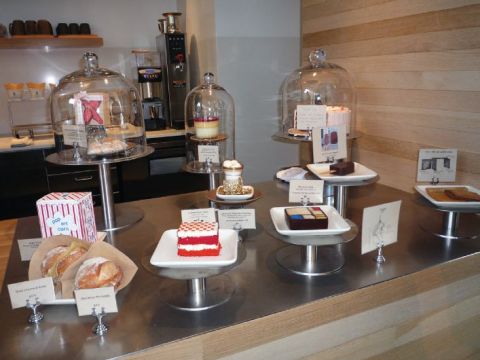
Atlanta Botanical Garden: The Edible Garden demonstrates to homeowners how edibles can be combined with ornamental plants to create a beautiful landscape; the Vegetable Amphitheater and an herb wall show urban dwellers tight on space how they can grow food vertically. James Beard Award-winning chef Linton Hopkins has partnered with the garden to bring his plant-to-plate concept of cooking with fresh local ingredients to guests who dine at The Cafe at Linton’s in the Garden. In early 2016, the garden will replace the café with a full-service restaurant called Linton’s in the Garden, where the chef will offer a menu based heavily on food grown seasonally in the Edible Garden.
Museum of Modern Art, New York: This spring, MoMA brings together Jacob Lawrence’s Migration Series for the first time in 20 years. The artworks explore the movement of 6 million African Americans from the rural South to the urban areas of the North, Midwest and West. To celebrate the seminal work and connect it to the present day, MoMA commissioned new works by poets, artists, filmmakers and chefs. Marcus Samuelsson (an Ethiopian-born, Swedish-raised celebrity chef and Harlem-based restaurateur), Abram Bissell (currently the chef at MoMA’s fine-dining restaurant, The Modern) and Dan Jackson (executive chef of MoMA’s cafés) developed special menus for the museum’s eateries showcasing the culinary influence of the Great Migration.
Beer, Wine and Spirits Exploration
While museums have long been a place where VIPs, members and guests can sip wine at exhibit openings, now institutions are using beverages to connect with broader audiences, share unique histories, tell a story and even generate some revenue. Museums have tapped into the mixology, craft beer and wine connoisseur movement in creative ways.
Belle Meade Plantation, Nashville, TN: In 1953, this legendary horse farm became a nonprofit organization working to educate the public about the property’s history, horses and hospitality legacy. Opened in 2009, a modern-day winery is shaped by historical research of the cultivation of Muscadine grapes and the family’s production of wine from the property’s vineyards. Wine names and labels serve as an opportunity for interpretation, connecting with viticulture (Iroquois Red Cabernet); property heritage and horse racing (Racing Silk Red); and key figures like Bonnie Scotland, the prolific stud horse (featured on the Red Muscadine label art).
Mount Vernon, VA: George Washington operated the largest whiskey distillery in America at the time of his death in 1799. Washington’s farm manager, a Scottish immigrant named James Anderson, convinced Washington that distilling would be a good addition to Mount Vernon, and it proved to be one of Washington’s most profitable enterprises. The distillery was reconstructed through detailed research and reopened in 2007 using the same recipes and techniques that Washington and Anderson pioneered. Founding Spirits: George Washington and the Beginnings of the American Whiskey Industry, a scholarly publication written by Dennis J. Pogue and commissioned by Mount Vernon, explores George Washington’s entrepreneurial exercise in whiskey and the broader history of the distilling in America.
Garfield Park Conservatory, Chicago: This May marks the conservatory’s sixth annual craft beer event, Beer Under Glass (BUG). The stunning greenhouse designed by turn-of-the-century landscape architect Jens Jensen provides the setting, while Illinois Craft Brewers Guild provides the beer. Capitalizing on the creativity of local brewers, dozens of breweries pour hundreds of options for guests, allowing them to taste beers that incorporate plants and fruits like coffee, pineapple, mango, chiles and licorice. Local restaurants participate in the fun and provide their best beer-pairing bites.
Reaching Out
From the farmers who provide products to traditions shared by families, cities and cultures, food is steeped in local connections. Museums are getting in on the action, using food as a tool to deepen community engagement and build relationships.
Queens Museum, NY: People’s favorite foods aren’t always healthful. The museum worked with its local Corona neighborhood and a nutritionist to transform comfort food favorites into healthful options. As high rates of heart disease and diabetes were a public health concern, it was an opportunity for the museum to demonstrate community partnership and leadership. The result was A Healthy Taste of Corona Cookbook, developed using a process similar to curating an exhibition. Compiling community photos and oral histories, the museum set out to accurately portray each neighborhood of the eclectic, ethnic and diverse borough that is Queens. Recipes collected from the community were reimagined by a nutritionist for the cookbook; original and revamped versions are included, allowing the home cook to make the ultimate decision. Content was then translated to Spanish in order to reach the museum’s predominantly Latino surrounding community. Today the book is used in the area in English as a Second Language classes and after-school programs.
Witte Museum, San Antonio, TX:Local chefs, farmers, ranchers and food historians present information, history and stories in “Salud! Culinary Nights at the H-E-B Body Adventure.” This interactive evening program for adults utilizes the museum’s demonstration kitchen to present a culturally and seasonally themed menu, as well as wine or beer pairings from well-regarded local wineries and breweries. This event builds on a long tradition of community-based food events at the Witte.
Denver Botanic Garden: The garden’s Chatfield property is the local farm. Started in 2010 with a $500,000 grant from Kaiser Permanente, the community supported agriculture (CSA) program works to connect people with their food and each other. From June through October, the farm provides fresh local produce to Colorado families and organizations that serve underresourced communities in the region. Shares of the farm are sold to members of the public who in turn receive fresh produce weekly at pick-up sites in downtown Denver and rural Chatfield. The CSA has grown over 50 tons of produce and donated over four tons to local charities. The program utilizes local volunteers working alongside veterans who attain sustainable farming skills and look to translate military experience into a civilian career to plant, grow and harvest produce.
Longwood Gardens, Kennett Square, PA: The gardens worked with the local community to overcome a challenge during its famed Christmas display. The 1906 restaurant and café, designed for a time when the garden had less visitation, are too small to accommodate today’s holiday crowds. So a partnership shuttles visitors to nearby restaurants. The results were successful on every front—visitors were able to get an excellent meal as part of their visit, local restaurants saw an uptick in business and area retailers were able to join in as venues for holiday shopping.
Making Meaningful Change
Food is a hot topic with deep connections to complex issues like poverty, social equality, sustainable living, water scarcity, obesity, animal and human rights, genetic modification, corporate responsibility and other pressing concerns. Museums are empowering visitors to make informed food choices that align with their broader values.
Hammer Museum at UCLA: The museum believes in the ability of art and ideas to illuminate our lives and build a more just world. In the fall of 2014, “The Future of Food: Democracy or Dictatorship?”—a discussion among food activist Vandana Shiva, environmentalist Derrick Jensen and ecologist Ignacio Chapela—explored the complex and highly controversial issues surrounding ownership and control of the food system. The discussion explored industrial
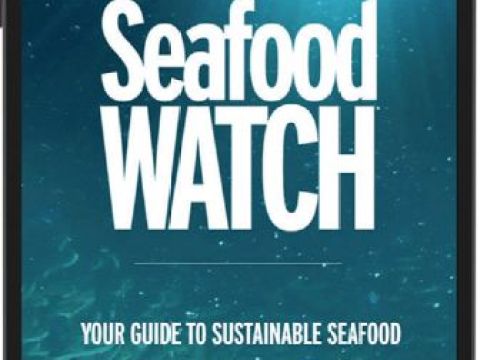
about seafood purchases.
agriculture’s impact on ecosystems and human health; how chemical and seed corporations are moving to control the global food system through genetic patents and seed laws that prevent farmers from saving and exchanging seeds; and the potential of food labeling laws to limit consumers’ ability to make informed choices about what they eat.
Monterey Bay Aquarium, CA: In its efforts to inspire conservation of the world’s oceans, the aquarium launched itsSeafood Watch program in 1999. Rather than simply pushing people to not eat threatened and depleted fish, Seafood Watch is working toward a more impactful change by educating consumers and collaborating with fishermen, aquaculture producers and major buyers to transform seafood production in sustainable directions. Researchers evaluate whether species are being caught and farmed in environmentally friendly ways. Results are published online, on pocket-size cards and on the Seafood Watch app to help consumers and businesses make
informed decisions when purchasing seafood. While the scientific rigor of the program hasn’t changed, the message to consumers has. Initially consumers were encouraged to ask where and how seafood was caught or farmed, in hopes of showing retailers there was demand for sustainable seafood. Over time, it became clear that businesses were embracing sustainable seafood because it aligned with their own sense of corporate social responsibility rather than in response to consumer demand. Now consumers are encouraged to ask one question: “ Do you sell sustainable seafood?” This simple inquiry rewards Seafood Watch partners and businesses that have made the shift to sustainable sourcing, and shows uncommitted business that there is demand for sustainable products.
Seafood Watch also works with producers and businesses to affect the seafood supply chain. Seafood Watch has partnered with some of the largest food service companies in North America to help them make a commitment to sustainable seafood and phase out nonsustainable products from their inventory. This dual approach has been effective, with fish once listed as “Avoid” now reclassified as “Good Alternatives” or even “Best Choices” as fishermen and aquaculture producers respond to customers’ requests for more sustainable options.
Marika Barranco is guest experience manager, Monterey Bay Aquarium; Sabina Carr is vice president, marketing, Atlanta Botanical Garden; Ann Weiting Chen is research director, Banyan Communications; and Lindsay Martin is director, administration, Hammer Museum at UCLA. This article was adapted from content for the 2015 annual meeting session, “Food 4 Ways: Trends, Messages, Programs and Management.”


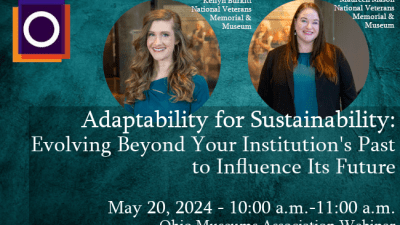

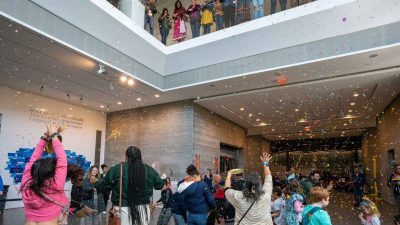
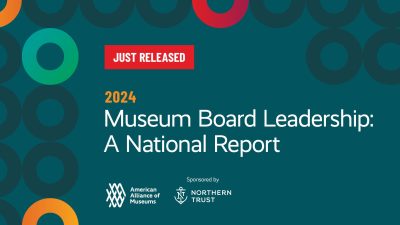
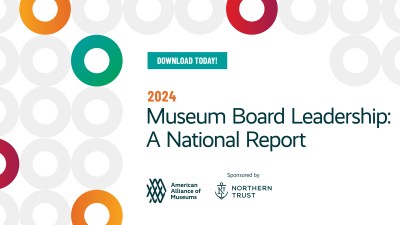

Comments